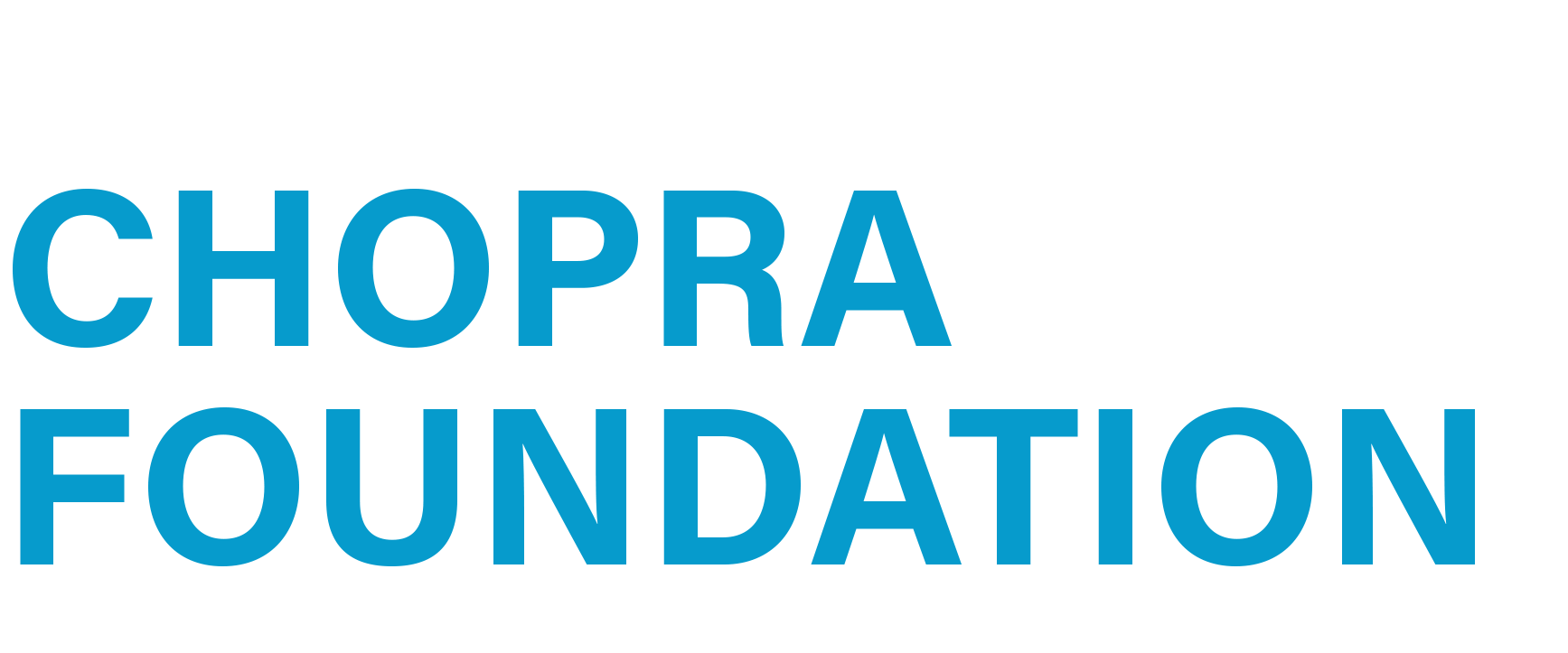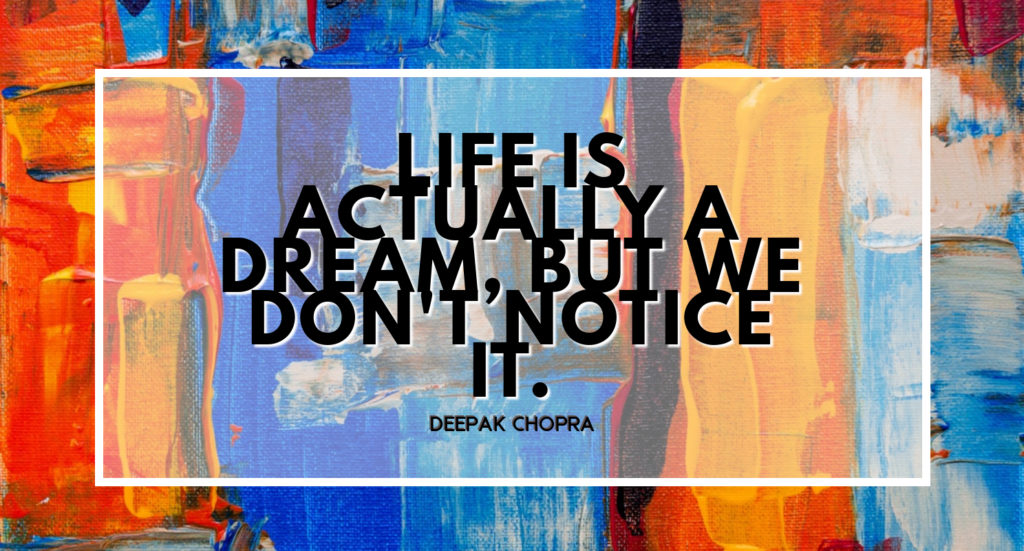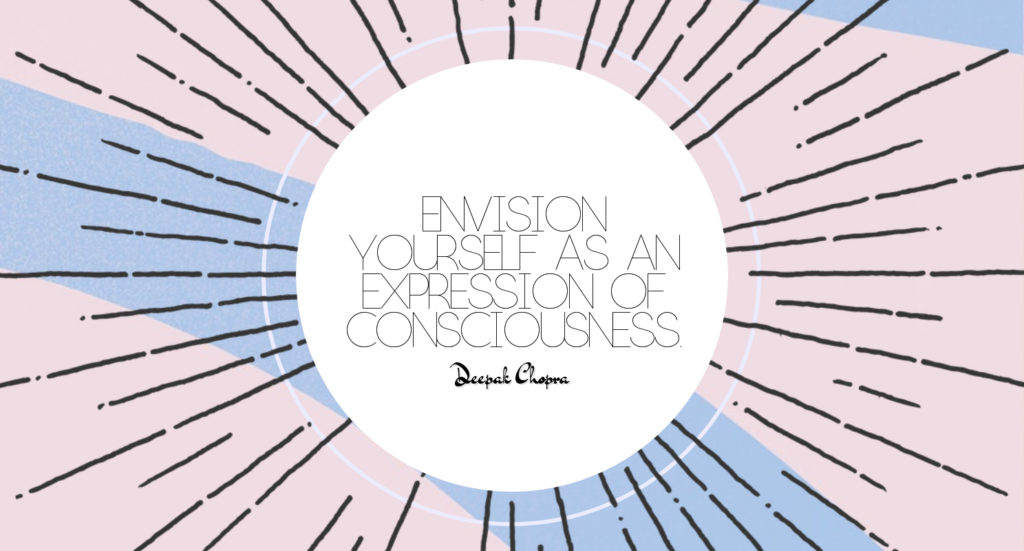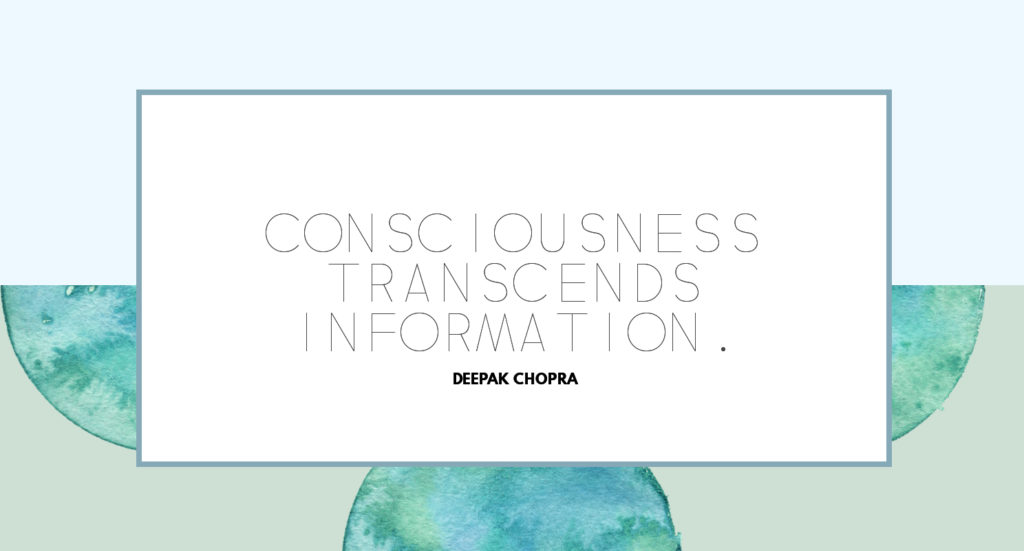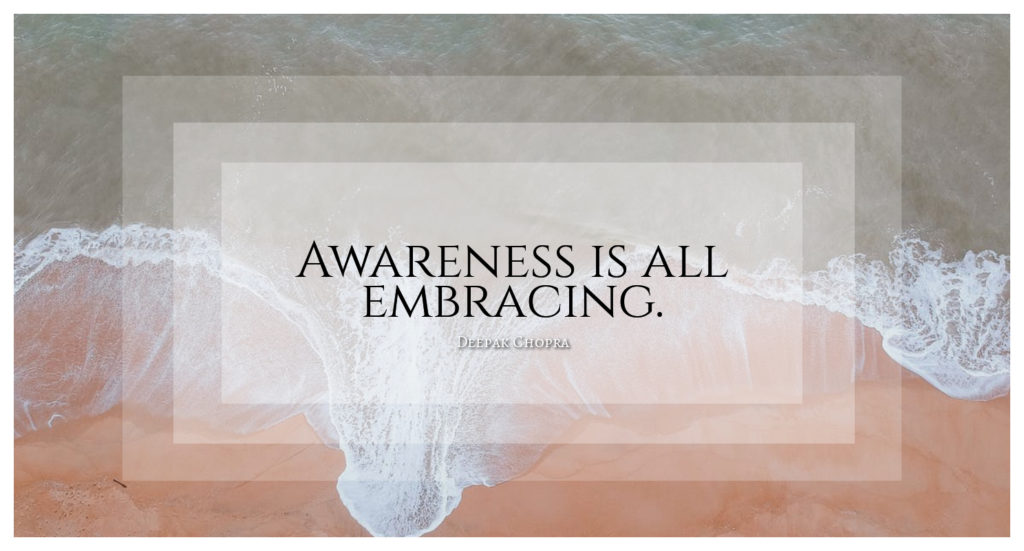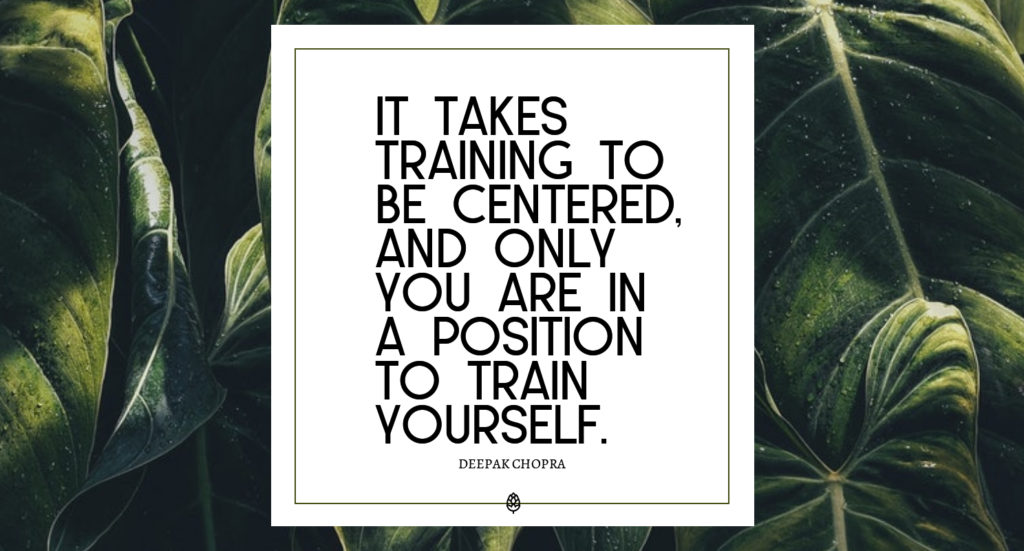
By Deepak Chopra, MD
This post begins a series on “skills in awareness.” These are skills that anyone can learn -and benefit form. the more aware you are, the better you will be at making positive lifestyle choices, resisting impulsiveness, being triggered by stress and people around you, and finding out who you really are. These are the goals of conscious living.
Most people use the words “consciousness” and “awareness” in a fuzzy way. The average person might think “If I’m awake and not asleep in bed, I’m conscious.” But to be aware is defined more accurately as not being unconscious in your habits, attitudes, and beliefs. Being aware isn’t passive. It influences all of your mental activity.
To illustrate, we can begin with the most basic awareness skill, being centered. The experience of many actors and singers is that they suffer from terrible stage fright until the moment they walk on stage, when suddenly they fall into a groove – despite their nerves, great performers like Olivier and Pavarotti, two notable sufferers from stage fright, showed total command of their art before the public. What causes such an instantaneous transformation? A combination of things:
- They became self-possessed.
- Nervousness turned to calmness inside.
- A practiced skill took over, as if on its own.
- They found themselves totally focused in the moment.
These are the ingredients of being centered. The last one is probably the most important. Before a performer steps on stage, there’s no demand to be present, to live in the moment. This gives wiggle room for nerves, queasiness, pacing back and forth – all signs of distraction. But to sing or act before an audience demands that you be present; it’s make or break. If your mind/body knows this, and if you have learned through repetition to meet the demand of the present moment, getting centered comes automatically.
Most leaders are performers, too – besides public speaking, they are called upon generally to set their personality aside in order to meet the demands placed by other people. A writer who had long-term access to President Obama remarked on how skillfully the president had learned to adapt his personal manner as he moved from one event to the next. In an hour’s span he might be called upon to meet with grieving families after a catastrophe, discuss policy with his cabinet, welcome a new appointee, and hold a news conference. Obama remarked that this quick-change didn’t come naturally to him. He wasn’t by nature a performer. But he trained to encompass a job with many facets. He had to be centered no matter how drastically the situation changed.
How should you train yourself to be centered? First, take an objective look at the traits you’d see in someone who is very good at being centered. Such a person
– Puts his entire attention on the job at hand
– Makes other people feel as if they have his entire attention while talking to him (a typical remark: “He made me feel for those five minutes that I was the most important thing he had to attend to that day.”)
– Remains calm in the midst of crisis and chaos.
– Rises to her best under pressure.
– Absorbs new information quickly.
– Keeps his self-possession.
– Doesn’t retreat from the moment.
– Isn’t easily distracted.
– Finds it easy to stay in the flow.
Assess where you stand on all these points. Once you honestly rate how well you are doing, the question is how to improve. First, stop doing the opposite things, the mental habits that defeat being centered.
– Don’t multi-task. focus on the moment at hand.
– Resist being distracted. Close the door, turn off the phone, and have your computer screen go black if you are talking to someone who needs your attention.
– Don’t use discussions in a one-sided way, as a sounding board for yourself. Others can tell when you aren’t interested in them, and one of the surest signs is silent impatience while you wait for them to quit talking.
– Avoid obvious signs of a lack of interest, such as tapping your pencil, fidgeting, interrupting others before they finish, glancing out the window, etc.
– Don’t isolate yourself in a private space when talking to others. Instead of sitting back behind your desk with your arms crossed, join the other person and lean toward them as they talk.
– Don’t scatter your attention randomly. Manage your mental time efficiently, so that you can be alone for serious thinking and share your mind at other times without feeling that you are being pulled away from what you’re interested in.
Avoiding these missteps and bad habits will go a long way. But you also need the positive experience of being centered. It begins when you are alone. In a quiet place, close your eyes, take a deep breath, and go inward. Place your attention on your heart, in the center of your chest. Sit quietly and easily let your attention remain there. If it is pulled away by random thoughts, recenter as soon as you notice what has happened. After a few minutes open your eyes. for the next half hour or so, observe yourself to see if you remain centered. Don’t instantly throw yourself into external demands.
If you repeat this practice several times a day, you will start to learn the difference between being centered and not. With repetition you train your brain, and in turn your involuntary nervous system, to prefer a calm, quiet, centered state. This preference brings along lower blood pressure, decreased stress response, and slower heart rate. You aren’t trying to be inert and unresponsive; nor are you forcing your attention to stay in the middle of your chest. The state you want is restful alertness, where you are more awake, not less, as the result of feeling calm.
I’ve begun with the skill of remaining centered because it’s so basic but also as an example of why the word “skill” is appropriate. It takes training to be centered, and only you are in a position to train yourself. Yoga and meditation teachers can certainly guide you, but in reality, most people have spent a lifetime learning how to manage and organize their outer life, paying scant attention to what goes on inside. Yet what goes on inside precedes everything external, shapes it, and allows you to understand and respond. Until you develop skills in awareness, you haven’t fully embraced a conscious lifestyle.
Deepak Chopra MD, FACP, founder of The Chopra Foundation and co-founder of The Chopra Center for Wellbeing, is a world-renowned pioneer in integrative medicine and personal transformation, and is Board Certified in Internal Medicine, Endocrinology and Metabolism. He is a Fellow of the American College of Physicians and a member of the American Association of Clinical Endocrinologists. Chopra is the author of more than 85 books translated into over 43 languages, including numerous New York Times bestsellers. His latest books are The Healing Self co-authored with Rudy Tanzi, Ph.D. and Quantum Healing (Revised and Updated): Exploring the Frontiers of Mind/Body Medicine. www.deepakchopra.com
